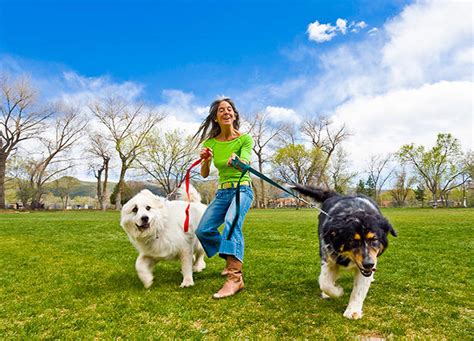Discover fun and effective ways to keep your dog mentally and physically stimulated with interactive games, agility training, fetch, walks, obstacle courses, swimming, and running.
Interactive Games for Mental Stimulation
Interactive Games for Mental Stimulation
Dogs are intelligent creatures that need mental stimulation to keep them happy and healthy. One way to achieve this is by engaging them in interactive games that challenge their minds. Playing games such as hide and seek, puzzle toys, and treasure hunts can help keep your dog mentally sharp and prevent boredom.
Interactive games not only provide mental stimulation, but they also offer a great bonding opportunity for you and your dog. These games allow you to spend quality time with your furry friend while also keeping their brain active and engaged. It’s a win-win for both you and your pet!
When choosing interactive games for your dog, consider their individual preferences and strengths. Some dogs may enjoy games that involve problem-solving, while others may thrive in games that require memory and focus. By tailoring the games to suit your dog’s abilities, you can ensure that they will enjoy the mental challenge and have a great time playing.
Agility Training for Physical Exercise
Agility training is a fantastic way to keep your dog physically active and mentally stimulated. It involves setting up obstacle courses for your dog to navigate, including hurdles, tunnels, and weaving poles. This type of exercise challenges your dog’s coordination, balance, and overall physical fitness, making it a fun and effective way to keep them healthy.
Not only does agility training provide a great physical workout for your dog, but it also helps strengthen the bond between you and your furry friend. As you guide them through the obstacle course, they learn to trust and rely on your commands, building a stronger connection between the two of you.
Ultimately, agility training can be a great way to improve your dog’s overall health and well-being, while also providing a fun and engaging activity for both of you to enjoy together.
Playing Fetch for Cardiovascular Health
Playing fetch is not only a great way to bond with your dog, but it also provides an excellent form of cardiovascular exercise for both you and your furry friend. When you engage in a game of fetch, your dog is constantly running back and forth, which gets their heart rate up and improves their cardiovascular health. As for you, throwing the ball or toy and running after your dog to retrieve it can help elevate your heart rate and improve your overall fitness level.
Regular sessions of playing fetch can also help to prevent obesity in dogs, which is a major risk factor for cardiovascular disease. By keeping your dog active and healthy, you are helping them maintain a healthy weight and reduce the risk of heart-related illnesses. Additionally, the mental stimulation that comes with playing fetch can help reduce stress and anxiety in both you and your dog, further contributing to overall cardiovascular health.
It’s important to remember to start slowly and gradually increase the duration and intensity of your fetch sessions to avoid overexertion, especially in older dogs or those with pre-existing health conditions. Always ensure that your dog has access to plenty of water and take breaks when needed. Playing fetch is a fun and effective way to incorporate cardiovascular exercise into your dog’s routine, promoting a healthy heart and a happy, active lifestyle.
Structured Walks for Bonding and Fitness
Structured walks are not only a great way for your dog to get some exercise, but also for you to bond with your furry friend. These walks provide an opportunity for both you and your dog to get some physical activity while spending quality time together. It’s important for your dog to have mental stimulation as well as physical exercise, and going for structured walks can provide both.
When going for a structured walk, it’s important to use a leash and ensure that your dog is under control at all times. This will help to prevent any accidents or running off. You can also use the time to practice obedience commands such as sit, stay, and heel, which will further strengthen the bond between you and your dog.
By incorporating structured walks into your routine, you can both stay fit and healthy while enjoying each other’s company. It’s a simple yet effective way to keep your dog physically and mentally stimulated, while also maintaining your own fitness level.
Obstacle Courses for Endurance and Coordination
When it comes to keeping your dog healthy and active, obstacle courses are a fantastic way to provide mental and physical stimulation. Obstacle courses require your dog to navigate through various challenges such as tunnels, jumps, and balance beams, which can help improve their endurance and coordination. Not only does this type of exercise provide a great physical workout, but it also engages your dog’s problem-solving skills as they figure out how to overcome each obstacle.
Setting up an obstacle course in your backyard or a local park can also be a fun bonding experience for you and your dog. By practicing and training together, you can build trust and strengthen your relationship while improving your dog’s overall fitness. Plus, watching your dog conquer each obstacle with determination and enthusiasm is incredibly rewarding for both you and your furry friend.
Whether you choose to build a DIY obstacle course or attend a class specifically designed for canine agility training, this type of exercise can provide numerous benefits for your dog’s physical and mental well-being. Not to mention, it’s a fun and engaging way to keep them active and healthy, both mentally and physically.
Swimming for Joint-Friendly Exercise
Swimming is a fantastic form of exercise for dogs, especially those with joint issues or older pups who may struggle with higher-impact activities. The buoyancy of the water helps to support the dog’s weight, reducing stress on their joints and allowing for a low-impact workout. This can be particularly beneficial for breeds prone to hip dysplasia or other joint conditions.
Not only is swimming easy on the joints, but it also provides a full-body workout for your furry friend. Dogs use all of their muscles to navigate through the water, which can help improve their overall strength and cardiovascular endurance. It’s a great way to keep your pup active and in shape without putting excessive strain on their joints.
Additionally, swimming is a mentally stimulating activity for dogs. They have to use their brains to figure out how to move through the water and stay afloat, providing a great mental workout along with the physical benefits. Plus, many dogs simply love being in the water, making swimming a fun and enjoyable way to exercise.
Running or Jogging for High-energy Breeds
Running or Jogging for High-energy Breeds
Running or jogging is a fantastic way to keep high-energy breeds healthy and happy. Exercise is an essential part of maintaining a dog’s physical and mental well-being, and high-energy breeds, such as Border Collies, Australian Shepherds, and Dalmatians, require frequent and vigorous activity to prevent behavior problems and maintain a healthy weight. Regular running or jogging can help to burn off excess energy, reduce anxiety, and keep these breeds in top physical condition. Plus, it’s a great way for you to bond with your four-legged friend!
Before starting a running or jogging routine with your dog, it’s important to consider their age, breed, and physical fitness. It’s always best to consult with your veterinarian to ensure your dog is healthy enough for this kind of exercise. Once your vet gives the green light, start slow and gradually build up your dog’s stamina. High-energy breeds are known for their endurance, but it’s important to be mindful of their limits to avoid injury. Invest in a good quality leash and harness to ensure your dog’s safety and consider running on soft surfaces, such as grass or trails, to reduce joint impact.
In addition to keeping your dog physically fit, running or jogging can provide mental stimulation and enrichment. High-energy breeds are intelligent and require both physical and mental exercise to prevent boredom and destructive behavior. You can incorporate games and activities into your run, such as stopping to do some obedience training, playing fetch along the way, or alternating between sprints and jogs to keep things interesting for your furry companion. Running or jogging with your high-energy breed is not only a great way to keep them healthy, but it’s also a wonderful opportunity for you to strengthen your bond and enjoy the outdoors together.
Frequently Asked Questions
Why is it important to exercise dogs?
Regular exercise is important for a dog’s physical health and mental well-being. It helps to prevent obesity, improve muscle tone, and reduce boredom and destructive behavior.
What are some fun outdoor activities for dogs?
Some fun outdoor activities for dogs include hiking, swimming, fetch, agility training, and playing at a dog park.
How can I exercise my dog indoors?
You can exercise your dog indoors by playing hide and seek, setting up an obstacle course, playing tug-of-war, or using interactive toys such as puzzle feeders.
How much exercise does my dog need?
The amount of exercise a dog needs depends on their breed, age, and health. Generally, a dog needs at least 30 minutes to 2 hours of exercise per day.
What are the signs that my dog needs more exercise?
Signs that your dog needs more exercise include weight gain, excessive barking, destructive behavior, restlessness, and attention-seeking behaviors.
What are the benefits of regular exercise for dogs?
Regular exercise helps to improve a dog’s cardiovascular health, joint flexibility, mental stimulation, and strengthens the bond between the dog and their owner.
Are there any health risks associated with over-exercising dogs?
Over-exercising dogs, especially in hot weather, can lead to heatstroke, dehydration, and exhaustion. It’s important to monitor your dog’s activity level and provide plenty of water and rest breaks.





